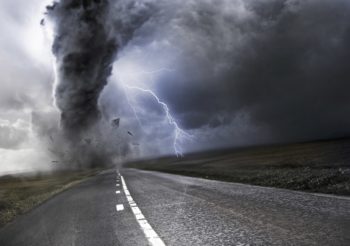
For the first time, scientists were able to use satellites to map the potential warming effect of large-scale changes to vegetation on the Earth’s surface.
“Our results show that vegetation-cover change over the period 2000–2015 has produced on average a brighter but warmer land surface,” reads a new study published in the journal Nature.
The European Commission Joint Research Center’s new study found “perturbations in the surface energy balance generated by vegetation change from 2000 to 2015 have led to an average increase of [0.23 degrees Celsius] in local surface temperature where those vegetation changes occurred.”
“Vegetation transitions behind this warming effect mainly relate to agricultural expansion in the tropics, where surface brightening and consequent reduction of net radiation does not counter-balance the increase in temperature associated with a reduction in transpiration,” the study found.
Scientists have debated how much land-use changes can affect regional temperatures. Chief among researchers arguing land-use can have major impacts on regional climates is the University of Colorado’s Dr. Roger Pielke, Sr.
Pielke published a paper in 1990 arguing that “even slight changes in surface conditions can have a pronounced effect on weather and climate.” Pielke’s view was derided by his colleagues, but the Nature study is evidence he was on the right track.
Using satellites, a team of researchers led by Gregory Duveiller examined how changes in land-use affected surface temperatures. Changes in vegetation, largely from expanding agriculture operations, has caused a net warming effect.
“We further show how all potential transitions towards croplands or grasslands raise local temperatures irrespective of the vegetation originally present,” the study found.
“Similarly, converting tropical evergreen forests to any other vegetation cover results in a warming of the local climate,” reads the study.
Reforestation can have a cooling effect on regional temperatures, but the study found it’s “not compensatory to that of deforestation because these changes have not occurred in the same regions.”
This is the second major study this year to find that agriculture operations influenced regional climate trends. A recent Massachusetts Institute of Technology study found agriculture operations in the U.S. corn belt have cooled summer temperatures for about six decades.
Read more at Daily Caller

















Before the climate change fraud I remember watching a science show where it detailed how cutting down the jungle in certain location in Africa was causing droughts where they had never happened before. Today of course, the droughts would be blamed on climate change.
Remember that CC is, [according to the UN IPCC] caused by global warming, which is supposedly caused by man/woman kind burning fossil fuels, which release the “pollutant” CO2 into the atmosphere.
Toronto hacked down all the trees they considered non-native species.
So the non-native human species in Toronto hacked down the non-native tree species. Using their logic, shouldn’t the non–native humans be removed as well?
Just wondering.
Pale face wrecked the place.